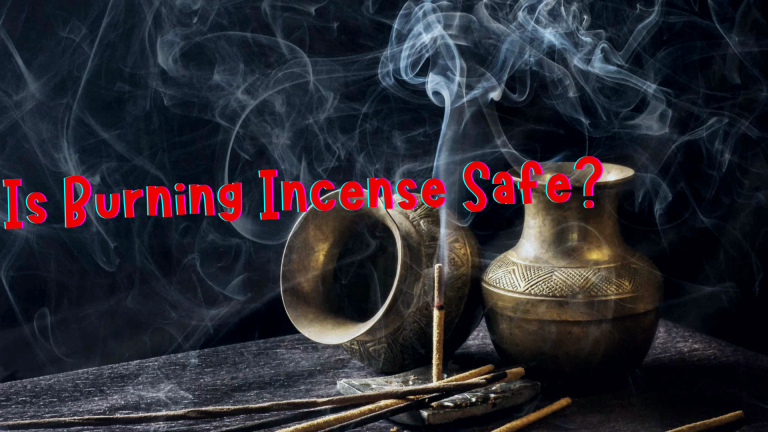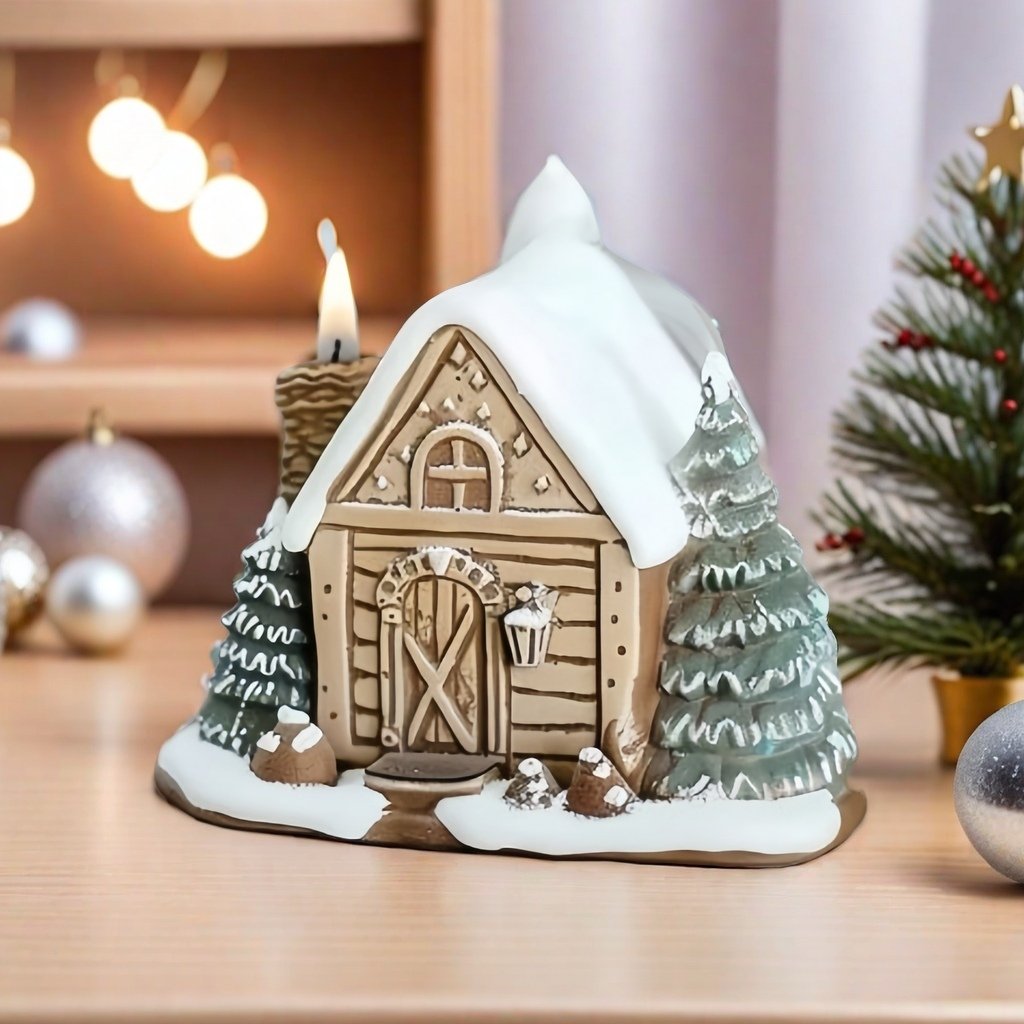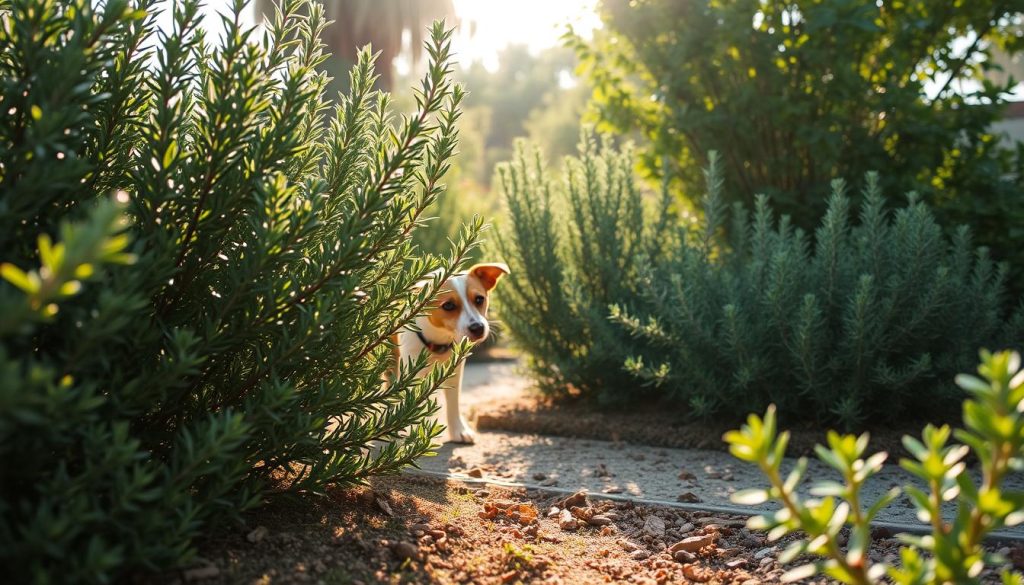Intro
Incense has the power to transform any space into a serene, aromatic haven, but have you ever wondered if burning incense could be putting your health—or the well-being of your pets—at risk? While many people love the calming effects and cultural significance of incense, concerns about its safety are becoming more widespread. From potential effects on your respiratory health to questions about how it impacts your furry companions, it’s important to understand the full picture before lighting that next stick.
In this article, we’ll dive into the safety issue and concerns of burning sticks, coils, powder, and cone incense, especially around sensitive groups like pets, babies, and pregnant women. Whether you’re curious about incense alternatives or want to know how to minimize risks, we’ve got you covered with the essential information to keep your space both fragrant and safe
Regarding General Safety of Burning Incense
Burning incense is a wonderful way to create a calming atmosphere, adding delightful scents to any room. When used properly, it is generally safe and can be enjoyed without concern. In this section, we will explore the answers to the following threee questions: “Is burning incense safe?” “Is it safe to breathe in incense smoke? ” and “how safe is incense smoke”:
Is Burning Incense Safe?
Burning incense is a time-honored tradition deeply rooted in cultures around the world, from ancient rituals to modern-day wellness practices. Whether it’s used to create a tranquil environment, support meditation, or simply freshen up a room with a pleasant scent, incense has long been valued for its calming effects.
But as incense has become more common in households, questions about its safety have arisen. Is burning incense safe? The answer largely depends on how and where it is used. When burned mindfully, incense is generally safe for both you and your home. However, like any product that involves combustion, it’s important to use it responsibly.
One of the key factors in making incense safe is moderation. Burning incense occasionally, in a well-ventilated room, should not pose significant risks. Many types of incense are made from natural materials like wood, resins, and herbs, which are less likely to emit harmful substances when burned. But like any burning material, incense releases small amounts of smoke, and it’s important to take precautions to prevent any potential impact on your indoor air quality.
The type of incense you use also matters when it comes to the question of “is buring incense safe“. High-quality, natural incense made from organic materials is safer and less likely to contain artificial chemicals or fragrances that can irritate your lungs. By selecting incense made with natural essential oils and ingredients, you can enhance your space with peace of mind, knowing that what you’re burning is gentle for both you and the environment.
Is It Safe to Breathe and Inhale in Incense Smoke? How Safe Is the Smoke?
Although incense is generally safe when used responsibly, there are a few safety concerns to keep in mind. The primary concern with burning incense is the smoke it produces. Is incense safe to breathe and inhale? While the amount of smoke from occasional incense use is minimal, it does contain particulate matter and volatile organic compounds (VOCs), especially when burned in large quantities or in poorly ventilated areas.
For individuals with respiratory sensitivities—such as asthma or allergies—the smoke from incense can be irritating. Breathing in or inhaling any type of incense smoke regularly can have a cumulative effect, potentially leading to respiratory discomfort. That’s why it’s crucial to ensure that your space is well-ventilated when burning incense. Proper airflow helps disperse the smoke and keeps the air fresh, minimizing the chances of irritation.
Another one essential consideration regarding how safe is the incense smoke is the quality of the incense itself. Not all incense is created equal—some cheaper or synthetic brands may contain artificial additives, dyes, or fragrances that can release harmful chemicals when burned. These chemicals may contribute to indoor air pollution, especially if used frequently or in confined spaces. Opting for incense made from natural ingredients like sandalwood, cedar, or herbs can help reduce this risk and provide a cleaner burn.
Incense Safety for Cats and Dogs
Burning incense can transform your home into a peaceful retreat, offering soothing aromas and a sense of calm. However, for pet owners, it’s important to recognize that our furry friends, particularly cats and dogs, may experience the effects of incense smoke differently than we do. Both animals have sensitive respiratory systems that react to airborne particles more intensely than humans. While you don’t need to stop burning incense altogether, understanding the potential risks and taking the right precautions can help you create a safe environment for your pets.
Is Burning Incense Safe For Cats and Dogs? Effects of Incense on Cats and Dogs
Cats, known for their keen sense of smell, are particularly sensitive to strong scents and smoke. Their respiratory systems are more vulnerable to irritation from airborne particles, making them more susceptible to discomfort when incense is burned in enclosed or poorly ventilated spaces. Occasional exposure to incense smoke is unlikely to cause significant harm, but regular or prolonged burning—especially without proper ventilation—can lead to issues like coughing, sneezing, or even respiratory distress over time. Cats may also exhibit behavioral changes if the fragrance is too overwhelming, such as avoiding certain rooms or becoming restless.
Dogs, while generally more resilient than cats, are also affected by incense smoke. Smaller breeds, or dogs with respiratory conditions such as pugs and bulldogs, may be more prone to irritation from smoke. If your dog starts showing signs like sneezing, coughing, or watery eyes after you’ve burned incense, it could indicate that the smoke is causing discomfort. However, these symptoms are typically temporary and can be alleviated by improving the airflow in the room or moving your dog to a space with fresh air. It’s important to monitor your pets closely when incense is burning to ensure their comfort and well-being.
What Incense Is Safe for Dogs and Cats?
When it comes to keeping your pets safe around incense, the type of incense you choose plays a crucial role. Not all incense is created equal—some are made with synthetic ingredients and artificial fragrances that can release harmful chemicals into the air. These synthetic incense products can be more irritating to both humans and pets. To minimize risks, opt for natural, non-toxic incense made from ingredients like sandalwood, cedar, or pure essential oils. These options tend to produce less smoke and contain fewer chemicals, making them safer for your home environment.
Beyond choosing the right incense, how you burn it is equally important. Always burn incense in a well-ventilated area to prevent smoke from building up. This can be as simple as opening a window, using a fan, or placing the incense in a larger room where the smoke can disperse easily. It’s also a good idea to allow your pets to leave the room if they seem uncomfortable. Giving them access to a smoke-free space lets them regulate their exposure and ensures they aren’t trapped in an environment that could irritate their respiratory systems. If your pet appears distressed or avoids the room where incense is burning, it might be best to reduce the frequency of use in that space.
Is Burning Incense Safe For Dogs?- Moderation Is Key
Even when using high-quality, natural incense, it’s important to burn it in moderation. Overexposure to smoke, even in small amounts, can lead to discomfort for your pets over time. Burning incense for short sessions—about 30 minutes to an hour—can be enough to fill the room with a pleasant fragrance without overwhelming the air with smoke. After that, you can let the lingering scent continue to permeate the space while the air naturally clears.
Additionally, consider how often you burn incense. While burning it occasionally is unlikely to cause any issues, continuously filling the air with smoke may eventually impact your pets’ comfort. Limiting the number of times you burn incense per day or week ensures that your pets aren’t constantly exposed to smoke. By finding the right balance, you can enjoy the calming effects of incense without compromising your pets’ health.
If you are interested, you can read our article What Smells Dogs Hate? and Is Rosemary Safe for Dogs?
Incense Safety for Birds and Guinea Pigs
When it comes to burning incense around smaller pets, such as birds and guinea pigs, extra caution is required. These animals have highly sensitive respiratory systems, which makes them more vulnerable to airborne particles and fragrances. Even minimal exposure to incense smoke can cause discomfort or health issues for these pets, so it’s important to fully understand the risks and take steps to protect them.
Is Incense Safe For Birds?
Birds have one of the most delicate respiratory systems in the animal kingdom. Their lungs are highly efficient, which means they absorb more airborne particles, including those from incense smoke. This makes even small amounts of smoke potentially harmful for them. Burning incense in a room with poor ventilation can quickly fill the air with particles that a bird’s lungs might struggle to process, leading to irritation or even respiratory distress.
Due to their heightened sensitivity, it’s best to avoid burning incense in rooms where birds are present. Even if you choose natural or non-toxic incense, the smoke can still pose risks for your bird. A good practice is to ensure that your bird has access to a separate, well-ventilated area where the air remains free from any smoke or strong fragrances.
Is Incense Safe For Guinea Pigs?
Like birds, guinea pigs are also highly sensitive to changes in air quality. Their small, compact bodies mean that even a little bit of smoke can have a significant effect on their breathing. Guinea pigs, in particular, are prone to respiratory infections, which can be exacerbated by exposure to incense smoke. Burning incense around these small pets can increase the risk of breathing difficulties, coughing, and other health complications.
If you enjoy burning incense, it’s important to ensure that your guinea pig’s living area remains free of smoke. Keep incense in rooms where your guinea pig doesn’t roam, and always ensure the air is circulating well when burning it in your home. Creating a clean, smoke-free environment for your guinea pig is essential to their long-term health.
Keeping Small Pets Safe Around Incense
The best way to keep your small pets safe is to minimize or eliminate incense use in the spaces they occupy. If you must burn incense, do so in a room far away from your bird or guinea pig’s enclosure and ensure the room is properly ventilated. Fans, open windows, and air purifiers can help disperse any smoke and maintain clean air.
As with cats and dogs, choosing natural, non-toxic incense made from pure ingredients can reduce the number of harmful chemicals in the air. However, because birds and guinea pigs are particularly sensitive to any kind of smoke, it’s advisable to use incense very sparingly, if at all, in homes with these animals
Incense Use During Pregnancy and for Babies
Is Incense Safe For Pregnancy?
Many pregnant women appreciate the calming and soothing effects that incense can bring to their environment. The gentle aromas can help create a serene atmosphere that promotes relaxation, which is especially beneficial during pregnancy. When used properly, incense can be a safe and enjoyable part of a pregnant woman’s routine. However, because pregnancy often heightens sensitivity to smells and environmental factors, some women may find that strong scents or smoke from incense cause slight discomfort, such as headaches or nausea.
To safely enjoy incense during pregnancy, it’s essential to use it in a well-ventilated area. Burning incense in a room with good airflow—whether that means opening windows, using fans, or burning incense outdoors—can help disperse any smoke, allowing you to enjoy the fragrance without the risk of inhaling too much smoke. This also ensures that the air in your space stays fresh and breathable.
For additional peace of mind, it’s a great idea to choose natural, non-toxic incense made from pure ingredients like sandalwood, cedarwood, or essential oils. These varieties are typically free from synthetic fragrances and chemicals, making them gentler and less likely to irritate sensitive respiratory systems. Natural incense provides the calming effect many women seek during pregnancy while minimizing the likelihood of triggering negative reactions to smoke or scent.
Using incense in moderation is key during pregnancy. Instead of burning incense continuously for long periods, opt for short sessions of 30 minutes to an hour. This allows you to enjoy the pleasant fragrance without overloading the air with smoke. After the incense has finished burning, the natural aroma can linger and enhance the peaceful atmosphere of your home, helping you to unwind and relax.
Is Incense Safe For Babies?
Babies have very delicate respiratory systems, making them more sensitive to airborne particles like smoke. As such, it’s important to be mindful of your baby’s environment, especially when it comes to scents and fragrances. While it’s best to avoid burning incense directly in a baby’s room, that doesn’t mean you have to give up the calming effects of incense altogether. You can still enjoy incense in other areas of your home as long as you take a few precautions.
One of the most important things to remember when burning incense in a home with babies is ensuring proper ventilation. Open windows, use fans, or place the incense in a room far from where the baby sleeps or spends most of their time. This helps prevent the buildup of smoke and maintains fresh air in the baby’s immediate environment.
For families with babies, using smokeless incense or natural air fresheners can be a gentler option. Smokeless incense provides all the lovely fragrance without producing the smoke that can irritate a baby’s lungs. Additionally, air fresheners made from natural essential oils can offer a subtle, refreshing scent without the concerns associated with traditional incense. This way, you can still create a calming and soothing environment in your home without exposing your baby to potential irritants.
Another great alternative is to burn incense while the baby is not in the room, then allow the fragrance to disperse throughout the home. The scent will still fill the air, but your baby won’t be exposed to the smoke. You can also choose incense varieties that use natural, mild ingredients to ensure that the scent is gentle and not overwhelming
Breathing and Inhalation: Tips for Everyone
Is Incense Safe to Breathe?
For the majority of people, burning incense occasionally in a well-ventilated space is not only safe but can also create a peaceful and aromatic atmosphere in the home. Incense has been used for centuries to enhance relaxation, meditation, and overall ambiance, making any room feel more welcoming and serene. However, to fully enjoy the experience and ensure safety, it’s essential to focus on proper ventilation.
When you burn incense, it’s a good idea to keep windows open or use fans to allow fresh air to circulate. This helps disperse the smoke, preventing it from building up in the room and lingering for too long. A well-ventilated space ensures that the air remains light and comfortable, leaving behind only the pleasant aroma of the incense without heavy smoke.
For individuals with respiratory sensitivities or allergies, choosing natural incense made from plant-based ingredients like herbs, flowers, or essential oils can help reduce the chance of irritation. These natural types of incense tend to produce fewer chemicals than synthetic varieties and are a gentler option for people who might be more sensitive to smoke. Using incense in moderation, alongside good airflow, will help ensure that everyone in your home, including those with sensitivities, can enjoy the fragrance without discomfort.
How Safe Is Incense Smoke?
When used with good ventilation and in moderation, incense smoke is safe and enjoyable for most people. Burning incense for short periods, such as 30 minutes to an hour, is often enough to fill a room with its beautiful fragrance without producing too much smoke. After the incense has burned out, letting the room air out naturally will allow any remaining smoke to disperse, leaving behind a lovely, subtle aroma that enhances your living space.
To enjoy incense safely, it’s important to burn it in moderation. Short burning sessions can still give your space a delightful scent without overwhelming the air. Once you’ve finished burning, simply allow fresh air to flow through the room, helping the scent remain while keeping the air clean and breathable.
For those who want an even gentler option, smokeless incense can provide the same aromatic benefits without producing visible smoke. Smokeless options are a great alternative for anyone who prefers a cleaner air experience while still enjoying the calming scents of incense. With these tips, you can easily create a warm and inviting atmosphere, knowing you’ve made a safe and mindful choice for your space.
To learn more about using incense safely, you can read our article How to Use Backflow Incense Burner.
Comparison: Incense vs. Candles
When it comes to creating a warm and fragrant atmosphere in your home, both incense and candles are popular choices. However, many people wonder whether incense is safer than candle, especially in terms of health effects and fire hazards. Let’s take a closer look at the differences between burning incense and using candles to help you decide which option may be safer for your space.
Health Effects: Incense vs. Candles
Both incense and candles release particles into the air when burned, which can affect air quality. The key difference lies in what is being released and how much exposure to these particles your lungs experience.
Incense produces smoke when burned, releasing fine particulate matter and volatile organic compounds (VOCs). These particulates can linger in the air, and prolonged exposure—especially in enclosed spaces—may lead to respiratory irritation, especially for individuals with asthma, allergies, or other respiratory sensitivities. The intensity of the smoke can vary depending on the type of incense you’re using, with synthetic incense often releasing more chemicals than natural varieties.
Candles, on the other hand, especially paraffin-based ones, can also release chemicals such as benzene and toluene when burned. Additionally, candles with synthetic fragrances may emit VOCs similar to those found in incense. However, soy-based or beeswax candles, especially those scented with natural essential oils, are often considered a safer alternative, producing fewer chemicals and lower levels of soot compared to paraffin candles.
In terms of health effects, both incense and candles can impact air quality, but opting for natural, non-toxic versions of either can significantly reduce the risks. If you or someone in your household has respiratory issues, consider using smokeless or low-smoke incense or candles made from beeswax or soy.
Fire Hazards: Incense vs. Candles
When it comes to fire hazards, candles pose a more obvious risk due to the open flame. A candle left unattended or placed too close to flammable objects such as curtains or papers can lead to accidental fires. This risk is especially concerning with tall or multi-wick candles, which produce larger flames. Many fire safety experts recommend never leaving a room with a candle still burning, and using sturdy, fireproof holders can help minimize the risks.
Incense, while generally producing a smaller flame, also poses fire hazards, particularly when incense sticks or incense cones are not placed securely in a holder. Incense sticks can generate hot ash that, if not caught by a proper burner, can potentially ignite nearby materials. Backflow incense cones or waterfalls also have concentrated heat, so it’s important to use heat-resistant holders and burn incense on a stable surface away from flammable materials.
Overall, both incense and candles require attentive usage to prevent fire hazards. However, candles, due to their larger flames, may present a slightly higher fire risk. Ensuring you have proper holders, keeping flammable items at a distance, and never leaving either candles or incense burning unattended are essential safety practices.
Conclusion: Is Incense Safer than Candle?
In terms of both health effects and fire hazards, the safety of incense and candles depends on how they are used and what type of product you choose. Natural, non-toxic options of both incense and candles are better for air quality, while being mindful of ventilation and reducing exposure to smoke or soot helps mitigate health risks.
Conclusion
Incense can be a wonderful addition to your home, offering calming scents and a peaceful ambiance that enhances relaxation, meditation, or simply freshens the air. By choosing high-quality, natural incense and using it in well-ventilated spaces, you can safely enjoy its benefits without worry. Whether you’re burning incense around pets, pregnant women, babies, or just for personal enjoyment, a few mindful practices—like limiting exposure and ensuring good airflow—will keep your environment both fragrant and safe. With the right precautions, incense can easily become part of your everyday routine, creating a soothing and inviting atmosphere that you and your loved ones can enjoy
Frequently Asked Questions: Incense Burner and Safety
Yes, incense burners are safe when used properly and with a few simple precautions. Incense burners are designed to hold and safely contain burning incense, whether it’s sticks, cones, or coils. To use an incense burner safely:
- Use heat-resistant burners: Ensure that your burner is made from a material that can withstand heat, such as metal, ceramic, or stone. This prevents any risk of the burner heating up and damaging surfaces.
- Place the burner on a stable surface: Always place the burner on a stable, flat surface to prevent it from tipping over. Keep it away from flammable items such as curtains, paper, or furniture.
- Choose the right burner for the type of incense: Incense burners come in different designs for sticks, cones, or coils. Be sure to use the right type of burner for the incense you are using, as it will catch the ash and hold the incense securely in place.
- Never leave burning incense unattended: As with any product that involves an open flame or heat, it’s important to keep an eye on it while it’s burning. Never leave the room with incense burning and always make sure it has fully extinguished before you leave
Backflow incense cones are a special type of incense that produce a dramatic, downward-flowing smoke. They are safe to use, but it’s important to handle them carefully because they create concentrated smoke. Use a proper backflow burner, as regular burners won’t create the same effect or may cause ash to scatter. Be mindful of airflow in the room, as poor ventilation could allow the smoke to build up. As long as you use backflow cones with the right burner and maintain good ventilation, they can be safely enjoyed for their visual and aromatic effects.
Incense sticks are one of the most popular types of incense and are considered safe when burned in a proper holder. The key to safety with incense sticks is ensuring they are placed in a stable holder that securely catches the ash and keeps the stick upright. Additionally, it’s important to burn them in a room with good ventilation, which will prevent smoke from accumulating. As with all incense, avoid placing the stick near flammable materials, and never leave it burning unattended. Proper use of incense sticks offers a safe and relaxing experience
Incense waterfalls use backflow cones to create a stunning, cascading smoke effect. They are generally safe, but because they concentrate the smoke in a small area, it’s important to use them in a well-ventilated space to avoid excessive smoke buildup. Be sure to use a waterfall burner designed specifically for backflow cones, and place it on a heat-resistant surface. While they are visually striking, safety measures—like ensuring proper airflow and avoiding flammable materials—are just as important for incense waterfalls as with any other incense product.
No, it’s not safe to leave incense sticks (or any incense) burning unattended. While incense sticks burn slowly and typically have a small flame, there is always a risk of fire if they come into contact with flammable items or fall out of their holder. It’s important to stay in the room while incense is burning and ensure it’s completely extinguished before leaving the house or going to sleep. A stable, heat-resistant holder is also essential to avoid accidents.








